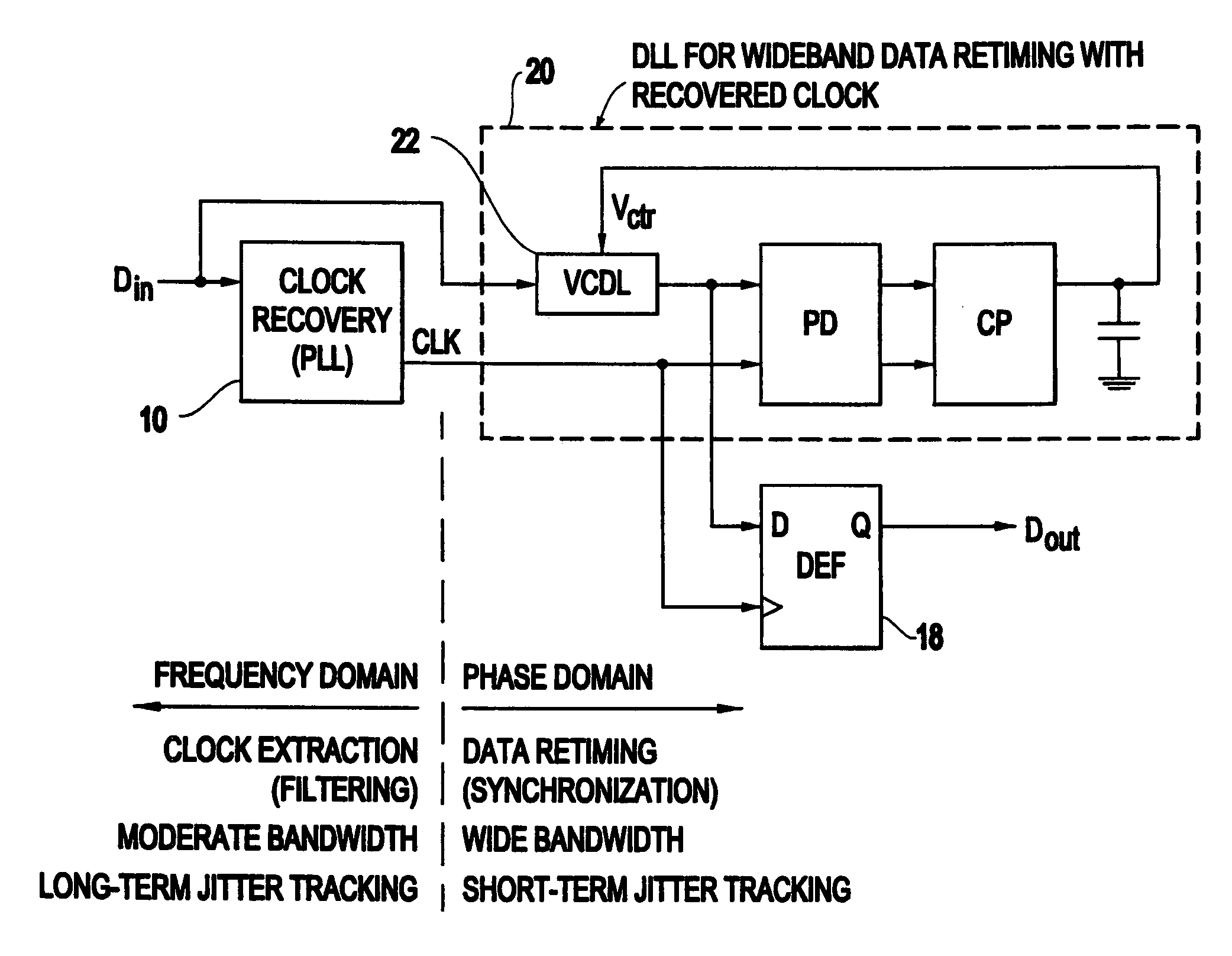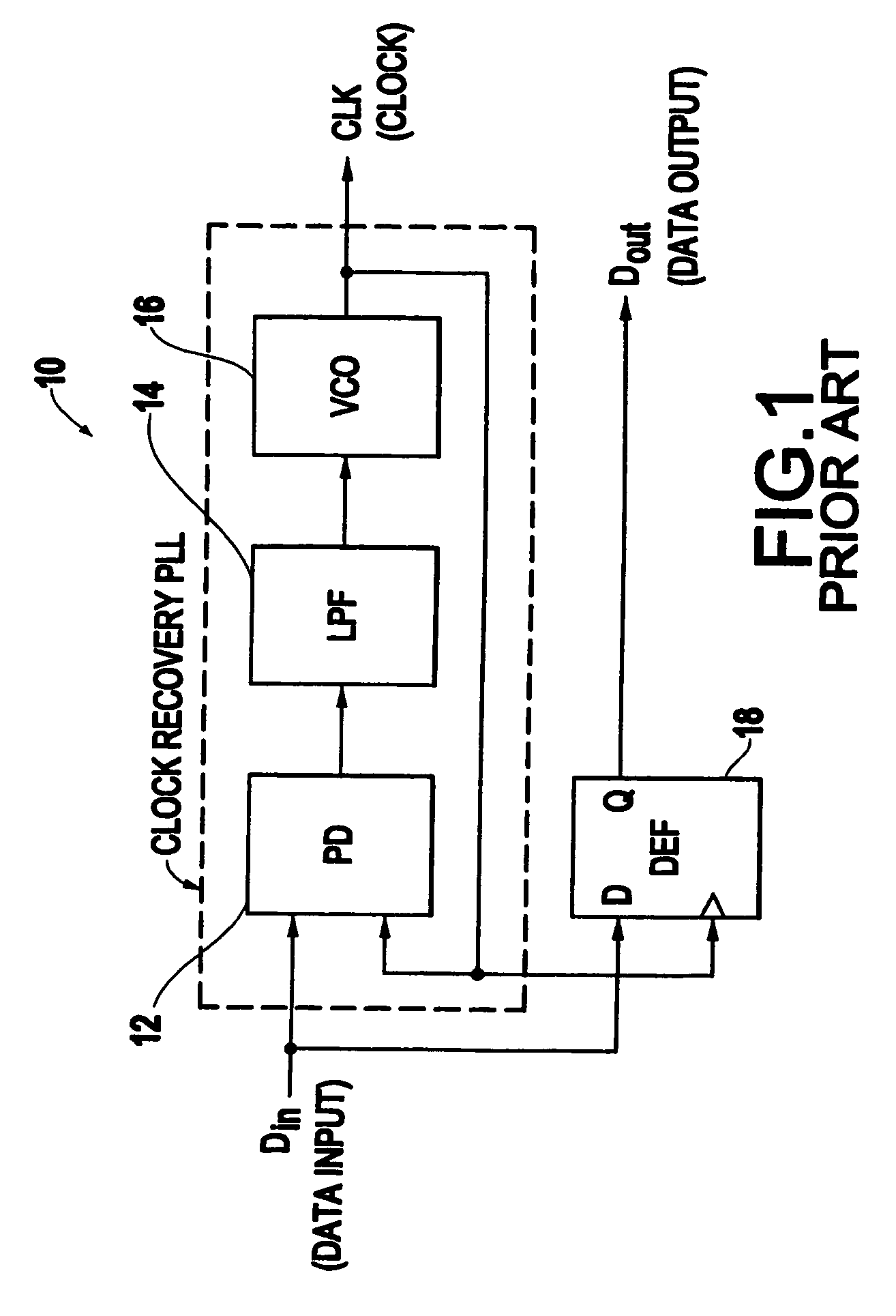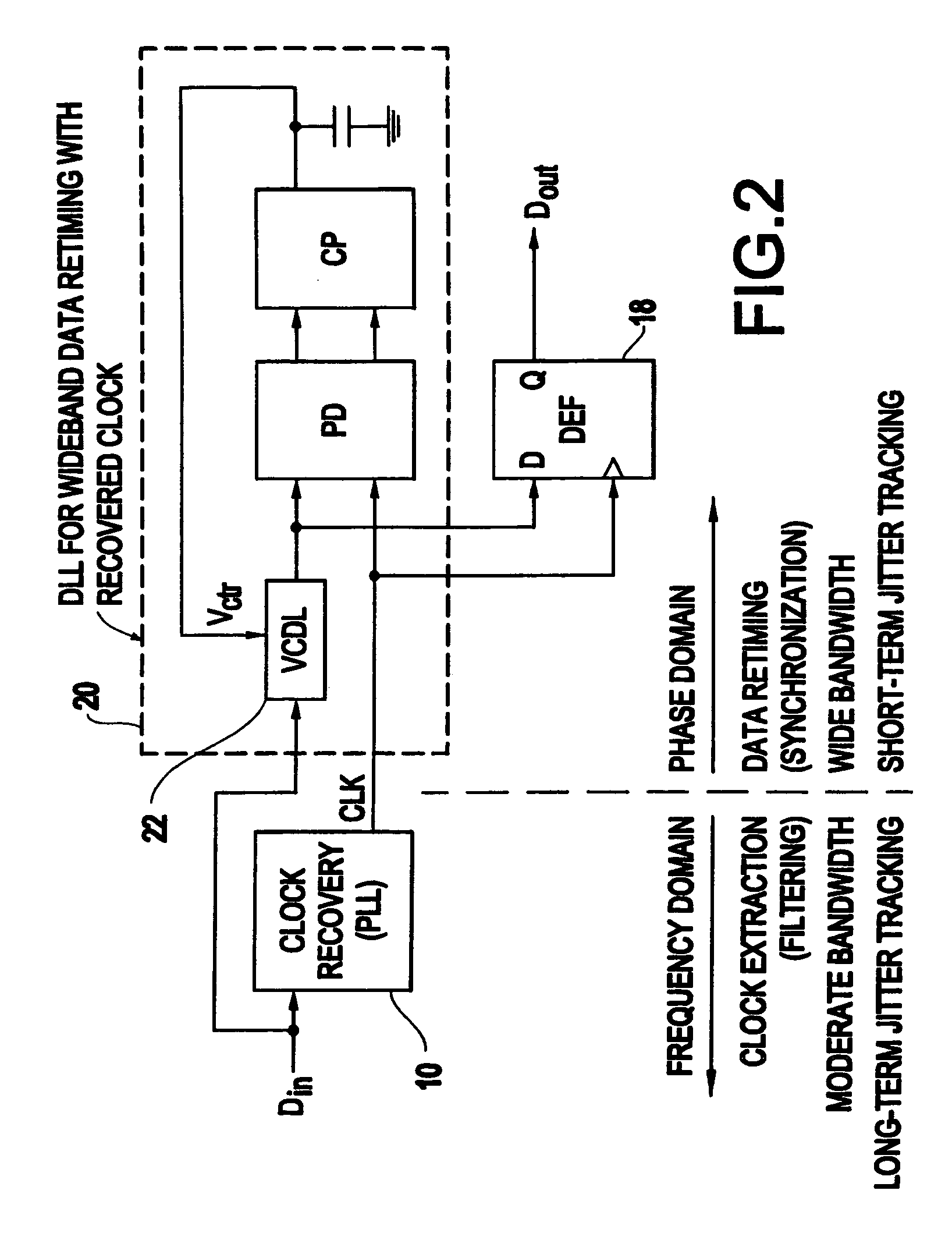Method and apparatus for clock-and-data recovery using a secondary delay-locked loop
a delay-locked loop and clockanddata technology, applied in the field of clockanddata recovery systems, can solve the problems of limiting the noise filtering of the data channel, increasing the bit error rate, and challenging the design of low-jitter phase-locked loops, so as to achieve optimal allocation of loop bandwidth for each function, avoid jitter peaking, and wide bandwidth
- Summary
- Abstract
- Description
- Claims
- Application Information
AI Technical Summary
Benefits of technology
Problems solved by technology
Method used
Image
Examples
second exemplary embodiment
[0035
[0036]When only data synchronization is required without jitter transfer consideration, an alternative way to implement the delay-locked loop 20 in accordance with a second exemplary embodiment of a clock-and-data recovery circuit of the present invention is to delay the clock instead of the data, as shown in FIG. 4. This embodiment offers simpler implementation since delaying the clock does not demand group-delay consideration in voltage-controlled delay line design.
third exemplary embodiment
[0037
[0038]FIG. 5 shows a block diagram of a third exemplary embodiment of the clock-and-data recovery system in accordance with the present invention for half-rate demultiplexers. When a divide-by-2 circuit is necessary for the half-rate demultiplexers 32, the delay-locked loop 30 with a half-rate phase detector 34 can also perform delay compensation for the divide-by-2 circuit 36. In FIG. 5. an in-phase signal (I) and a quadrature phase signal (Q) are generated from the divide-by-2 circuit 36 to support half-rate phase detection. Since both rising and falling edges of the clock signal are aligned to the data in the half-rate demultiplexer scheme, a quadrature phase (Q) is needed to sample the data as shown in FIG. 5.
[0039]The present invention also offers data-pattern-independent bang-bang phase detection when binary phase detectors are used. A conventional bang-bang phase detector (BBPD) generates an error voltage to control the voltage-controlled oscillator, resulting in frequen...
fourth exemplary embodiment
[0040
[0041]A fourth exemplary embodiment of a clock-and-data recovery circuit in accordance with the present invention, shown in FIG. 7 which provides parallel link data communications without using multiple voltage-controlled oscillators.
[0042]As shown in FIG. 7, one phase-locked loop 40 provides the clock recovery, and four delay-locked loops 42, 44, 46 and 48, perform data retiming for four different data channels. Compared to having four clock-and-data recovery circuits, the topology shown in FIG. 7 requires only a single voltage-controlled oscillator instead of four voltage-controlled oscillators as would be demanded by a four-clock-and-data recovery circuit approach. Reducing the number of on-chip voltage-controlled oscillators is particularly beneficial because voltage-controlled oscillators are very sensitive to noise coupling and crosstalk, which may result in consuming more area for isolation.
[0043]Compared to methods using a phase rotator, the present invention does not e...
PUM
 Login to View More
Login to View More Abstract
Description
Claims
Application Information
 Login to View More
Login to View More - R&D
- Intellectual Property
- Life Sciences
- Materials
- Tech Scout
- Unparalleled Data Quality
- Higher Quality Content
- 60% Fewer Hallucinations
Browse by: Latest US Patents, China's latest patents, Technical Efficacy Thesaurus, Application Domain, Technology Topic, Popular Technical Reports.
© 2025 PatSnap. All rights reserved.Legal|Privacy policy|Modern Slavery Act Transparency Statement|Sitemap|About US| Contact US: help@patsnap.com



